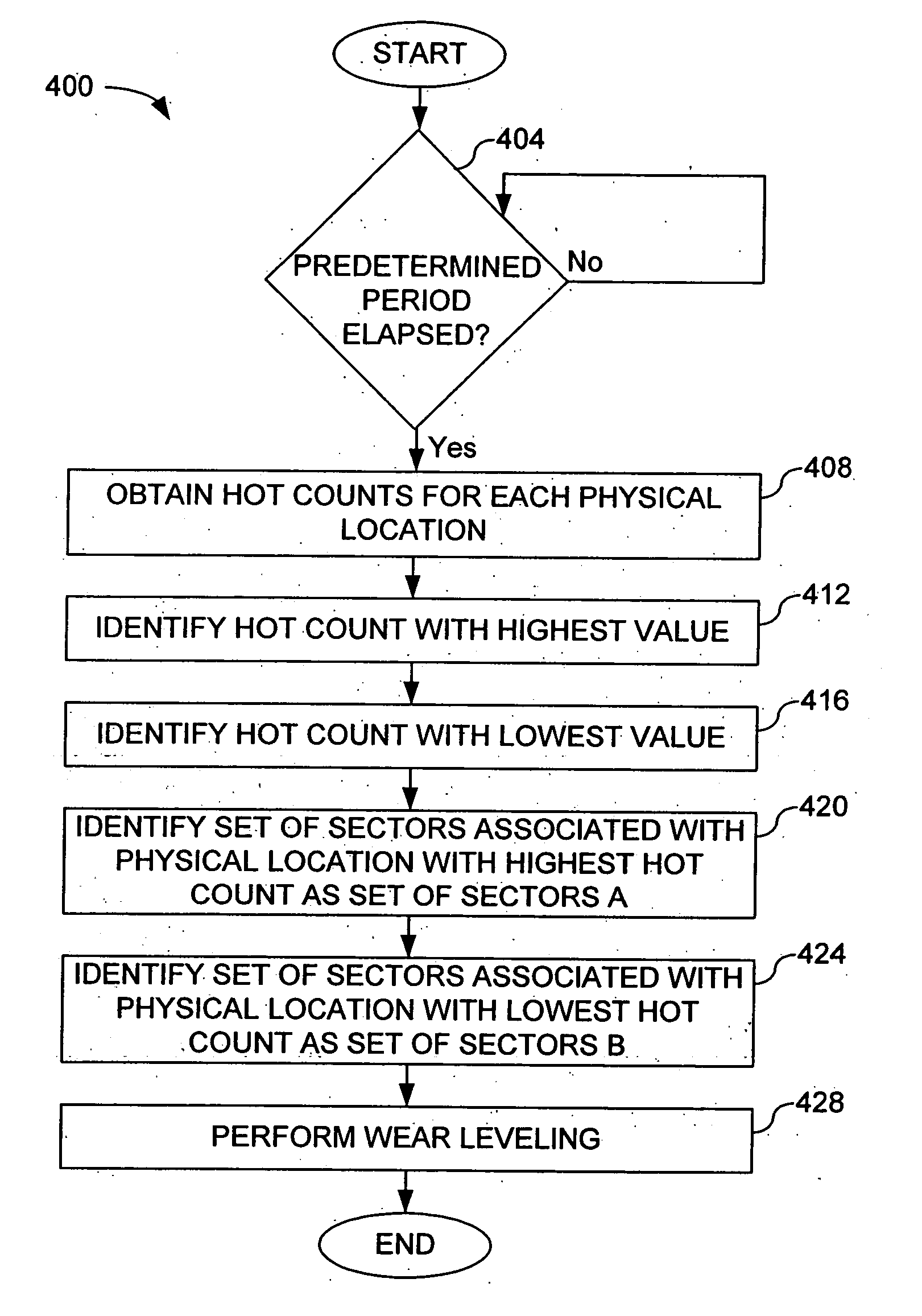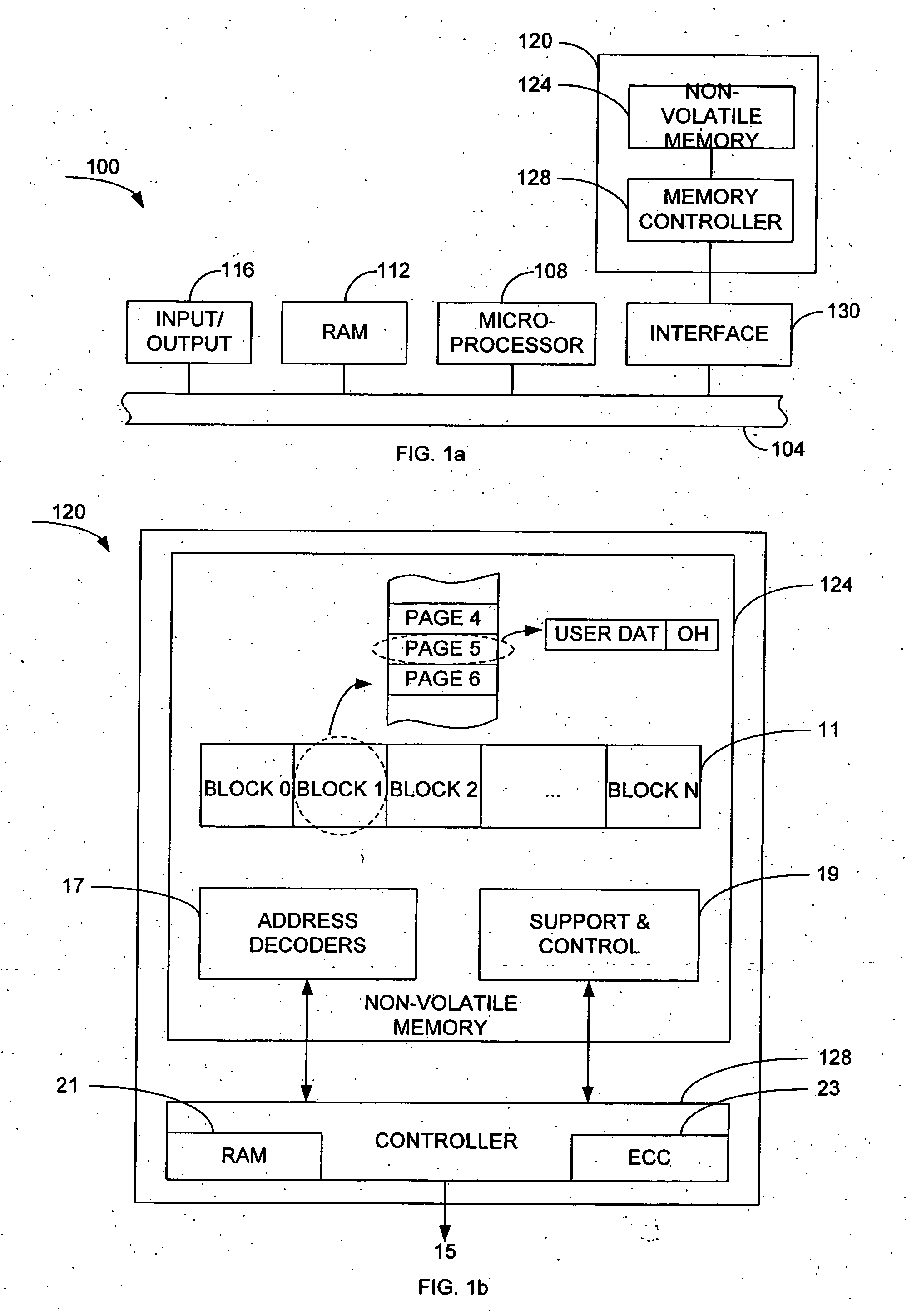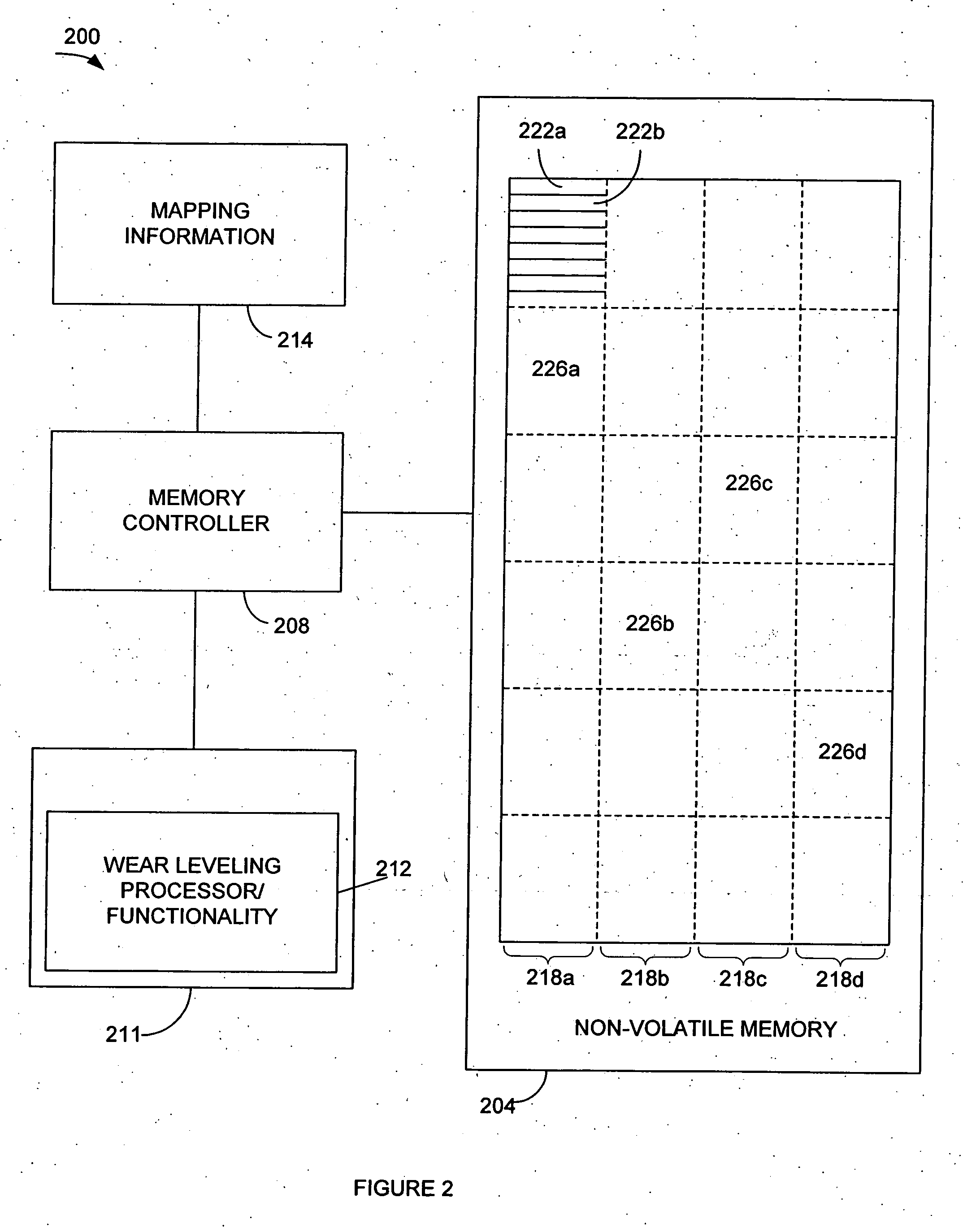Automated wear leveling in non-volatile storage systems
a technology of non-volatile storage and automatic leveling, which is applied in the direction of memory address formation, micro-instruction address formation, allocation/relocation, etc., can solve the problems of loss of use, significant performance degradation, and adverse effects on users of flash memory systems, so as to facilitate the location of various logical blocks and effectively log the progress of swaps or migrations
- Summary
- Abstract
- Description
- Claims
- Application Information
AI Technical Summary
Benefits of technology
Problems solved by technology
Method used
Image
Examples
Embodiment Construction
[0038] A. Memory Organization and Basic Definitions
[0039] The present inventions are related to wear leveling in memory systems that are capable of deteriorating in performance over time as the number of erase and write cycles increases. While the embodiments described herein describe non-volatile EEPROM based memory systems, the various aspects of the present inventions are applicable to any type of storage medium susceptible to "wear". For example, an emerging type of non-volatile memory technology is phase-change memory. Information is stored by changing the phase of a given material. Such systems also may be prone to "wear", where the storage medium is less capable of storing information as the number of times the medium has been cycled increases. The present inventions can be readily applied to such technologies.
[0040] In one embodiment, non-volatile memory storage cells within flash memory storage systems may be repetitively programmed and erased, although each cell may only b...
PUM
 Login to View More
Login to View More Abstract
Description
Claims
Application Information
 Login to View More
Login to View More - R&D
- Intellectual Property
- Life Sciences
- Materials
- Tech Scout
- Unparalleled Data Quality
- Higher Quality Content
- 60% Fewer Hallucinations
Browse by: Latest US Patents, China's latest patents, Technical Efficacy Thesaurus, Application Domain, Technology Topic, Popular Technical Reports.
© 2025 PatSnap. All rights reserved.Legal|Privacy policy|Modern Slavery Act Transparency Statement|Sitemap|About US| Contact US: help@patsnap.com



